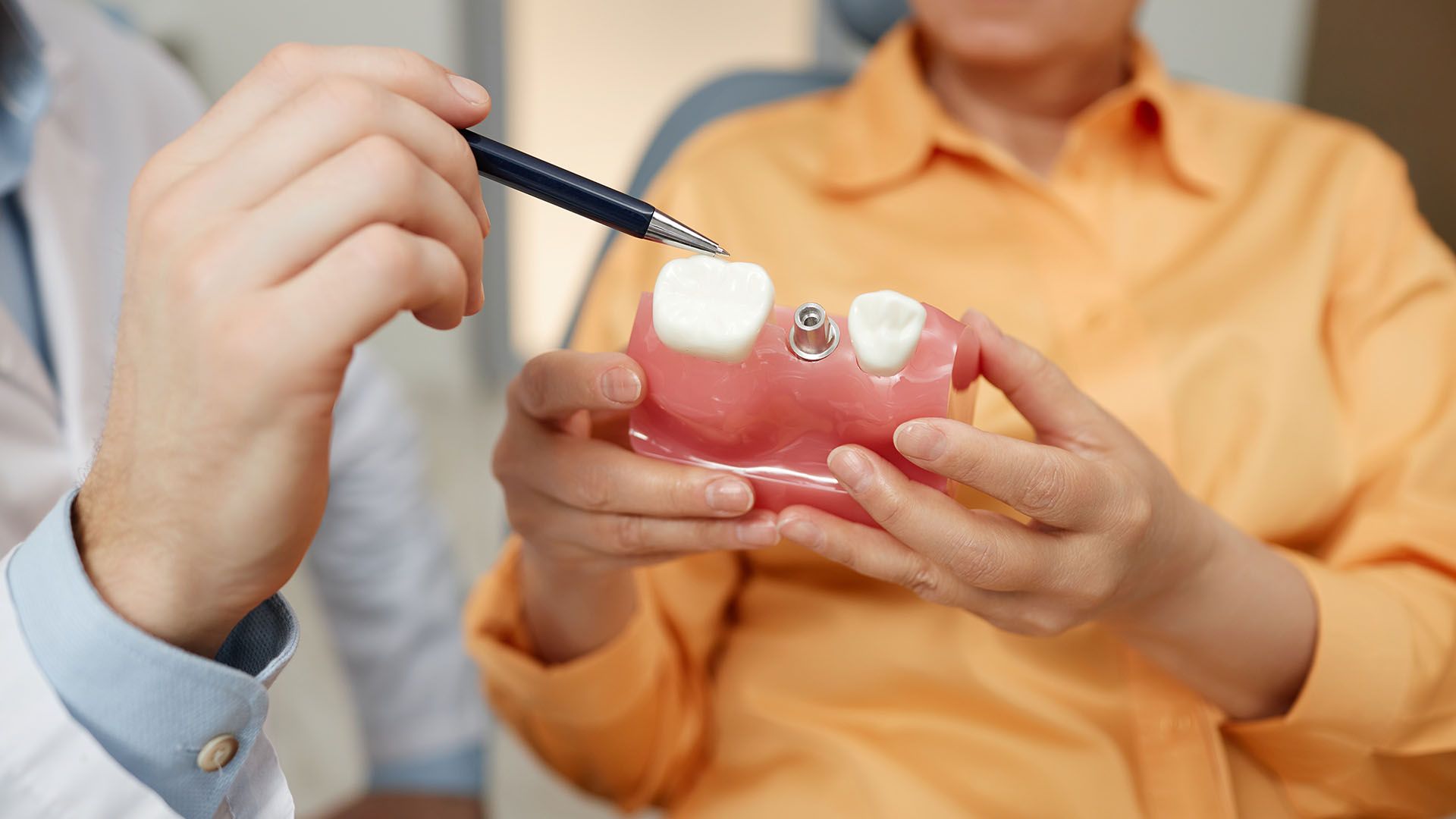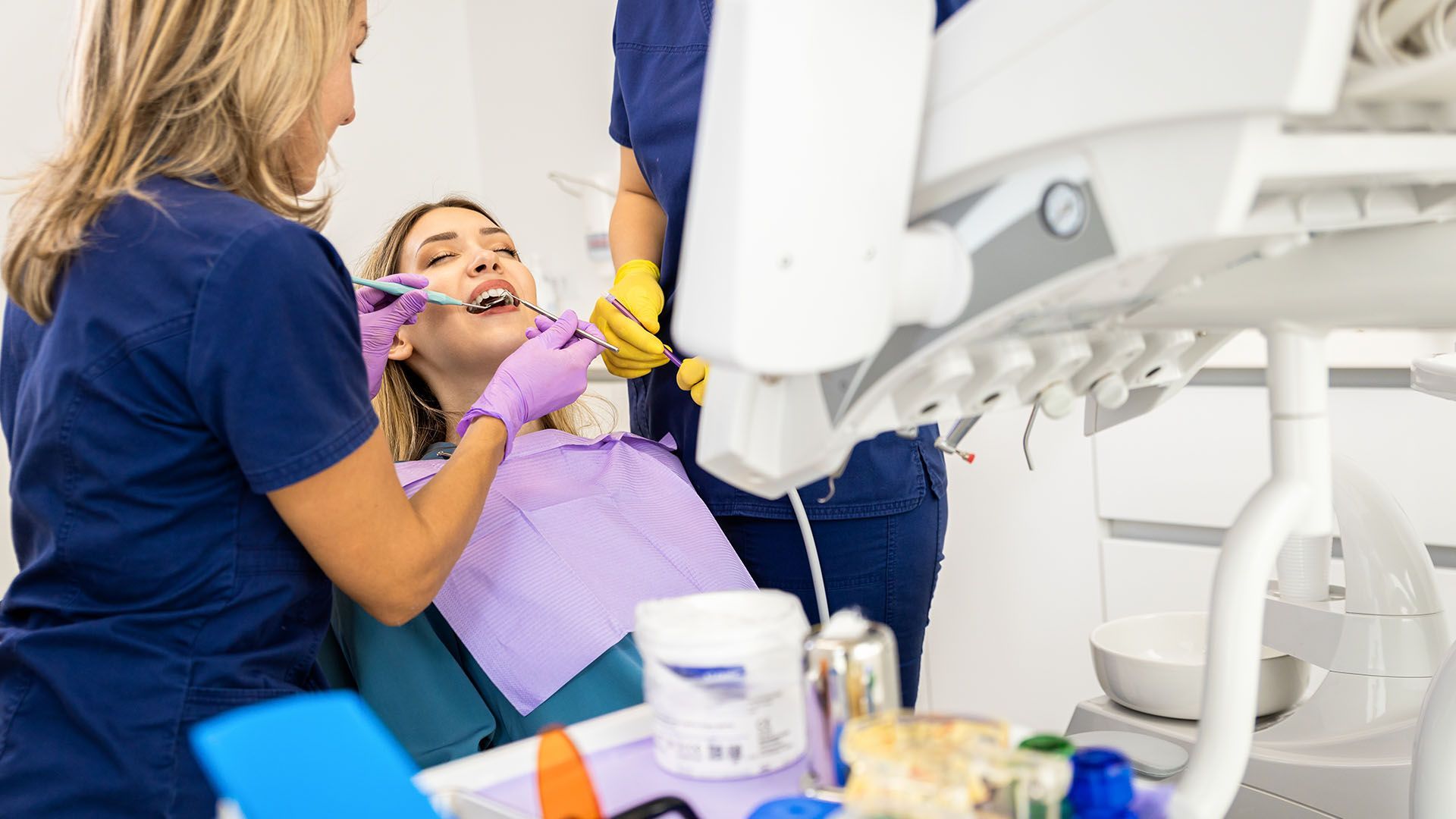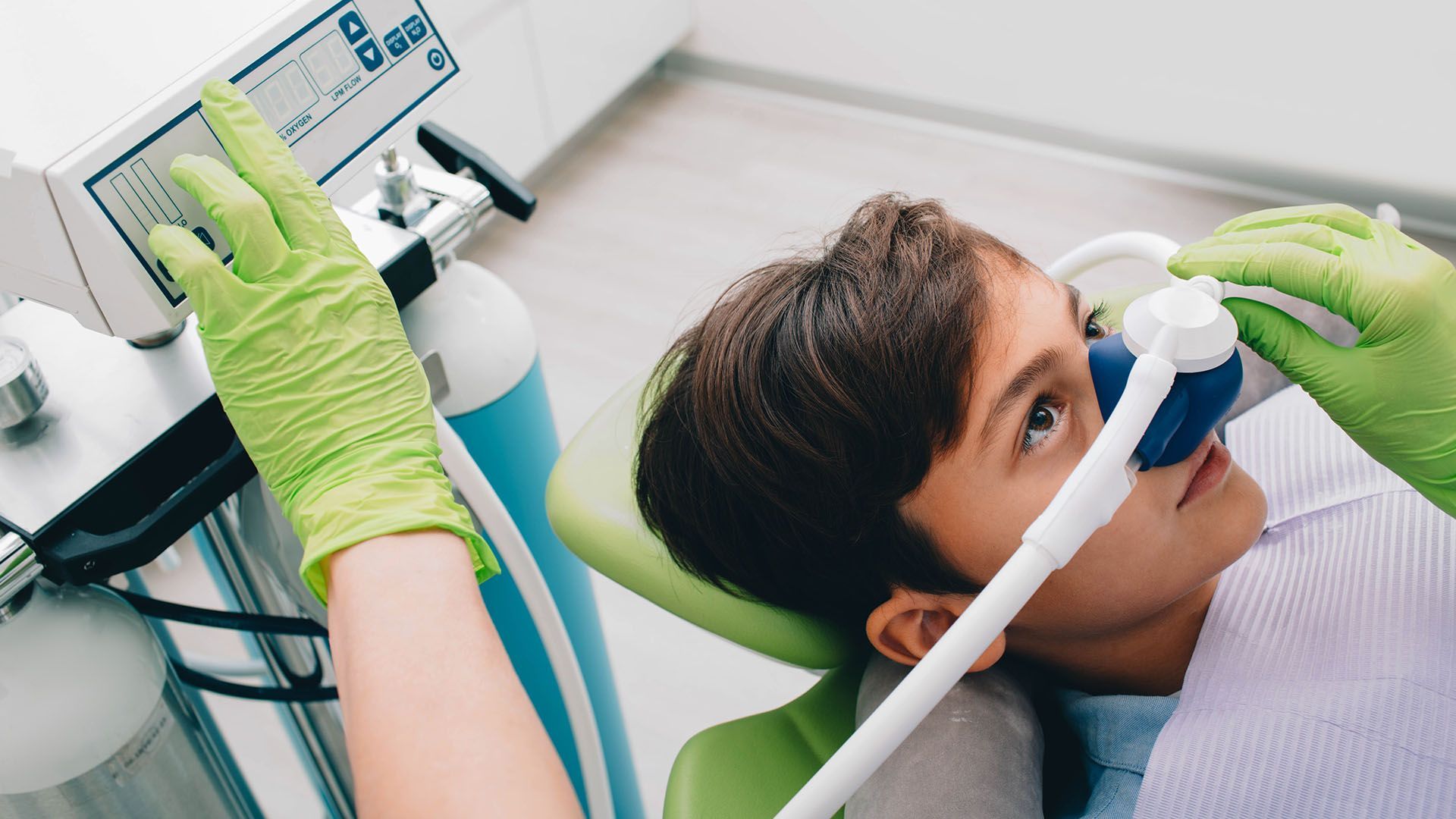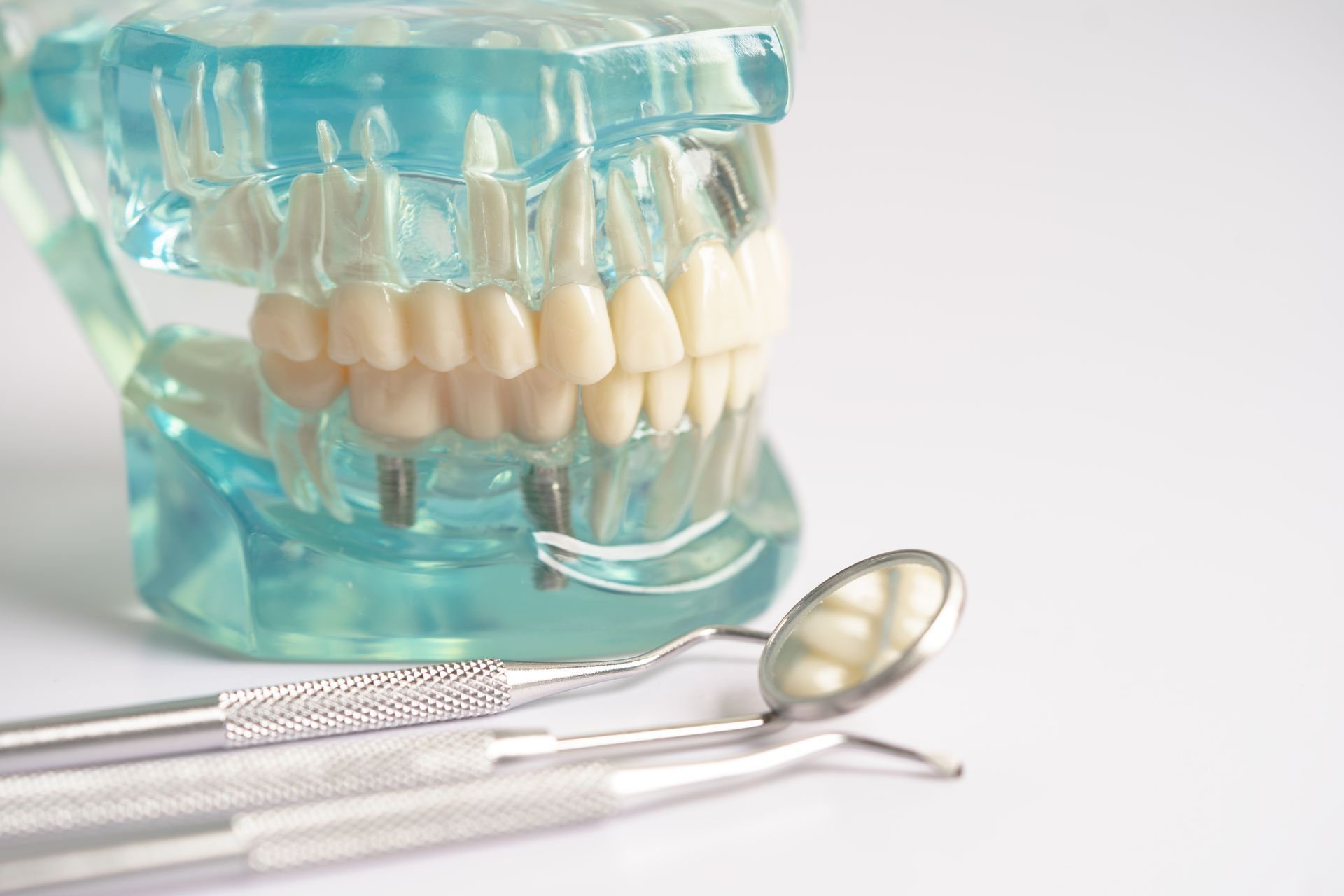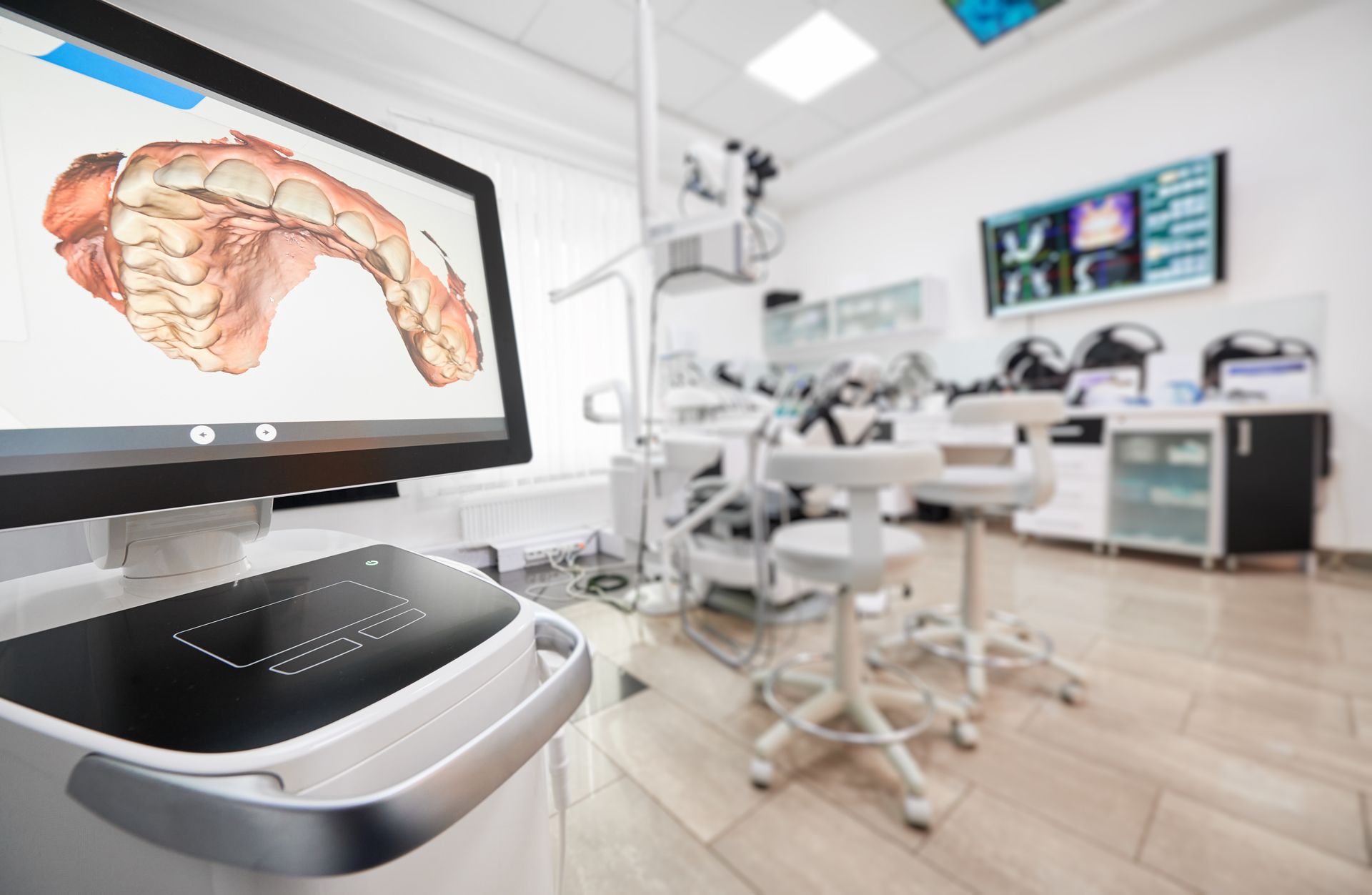Mini Dental Implants vs Traditional Implants: Key Differences Explained

At West Valley Dental, our team places and restores both traditional (standard) and mini (narrow diameter) dental implants every week. We use 3D CBCT imaging, digital planning, and guided implant placement to help protect nerves and sinuses and support long-term implant success. Because we work with full-size implants, narrow diameter implants, and implant-supported dentures, we understand where each option shines and where it doesn't.
- Mini implants (narrow diameter): Thinner posts, often used when bone is thin or for stabilizing dentures. They’re less invasive and can be more affordable, but they have
more limitations and may not last as long in heavy-bite or multi-tooth cases.
- Traditional implants (standard diameter): Thicker posts with more parts and options. They usually offer
better stability,
broader restoration choices, and
strong evidence for longevity, but they require enough bone and a longer healing time.
What Are Dental Implants?
Dental implants replace missing tooth roots. A small titanium post fuses with the jawbone through osseointegration. After healing, we attach an abutment and a crown, bridge, or denture to restore chewing and smiles.
Overview of Traditional Dental Implants
Traditional, standard-diameter dental implants are usually about 3.25–6.0 mm wide. They're designed to handle everyday chewing forces and support many restorations, from single crowns to full-arch bridges and implant-supported dentures. These full-size implants have decades of research behind them and a strong record for long-term success when planned and cared for well.
What Are Mini Dental Implants?
Mini dental implants (MDIs) are narrow diameter dental implants, often around 2–3 mm wide. Many minis use a one-piece design with a ball-shaped head that can snap into a denture or support certain small restorations. Because they're thinner, they can sometimes be placed when bone is narrow without grafting.

Key Differences Between Mini and Traditional Implants
Size and Structure
- Mini implants: Narrow, often
one-piece (post and abutment combined).
- Traditional implants: Wider, usually
two-piece systems with separate abutments, offering more restorative flexibility and parts.
Placement Procedure
- Mini implants: Typically a
less invasive placement with smaller pilot holes; sometimes used for same-day denture stabilization.
- Traditional implants: Often involve a
two-stage process, placement, healing, then abutment/crown. Digital guides and planning help with precision.
Bone Requirements
- Mini implants: Because they’re thinner, they can fit
narrow ridges and areas with limited bone density. Useful when patients want to
avoid bone grafting, if appropriate.
- Traditional implants: Prefer
adequate bone width and height. If bone is too thin or soft,
bone grafting or
sinus lifts may be recommended to support long-term stability.
Healing Time and Recovery
- Mini implants: Smaller surgery can mean
quicker recovery and, in denture cases, faster stabilization.
- Traditional implants: Healing usually takes
several months for full osseointegration before final restorations, especially for crowns and bridges.
Pros and Cons of Mini Dental Implants
Advantages of Mini Implants
- Less invasive: Smaller access points can reduce post-op soreness and speed recovery.
- May reduce upfront cost of dental implants: Often fewer parts and shorter chair time.
- Good for denture stabilization: Can improve retention for loose lower dentures.
- Option for narrow bone: May
avoid grafting in select cases with thin ridges.
- Faster transitions: In some cases, dentures can be stabilized the same day.
Limitations and Risks
- Lower load capacity: The narrow post may have
reduced implant stability under strong bite forces, especially in molar areas.
- Fewer restoration options: One-piece designs can limit angulation corrections and complex cases.
- Longevity considerations: Evidence suggests
implant longevity differences may favor standard implants in demanding situations.
- Not ideal for all cases: Multiple missing teeth, heavy grinding, or poor bone quality may push us toward standard implants or grafting.
- Maintenance: Ball-and-socket denture attachments can wear and need periodic replacement.
Pros and Cons of Traditional Dental Implants
Benefits of Full-Size Implants
- Strength and stability: Wider diameter supports
long-term implant success and heavier chewing forces.
- Versatility: Works well for
single crowns, bridges, and full-arch options. Angled abutments and parts help handle complex anatomy.
- Proven track record: Decades of data back
predictable outcomes when bone and bite are managed well.
- Better for smile design: More control over
emergence profile, spacing, and esthetics in the front of the mouth.
- Upgrade path: Easier to adapt if your treatment plan evolves over time.
Potential Drawbacks
- More involved process: Often a
longer timeline with staged healing.
- Bone grafting may be needed: To meet
bone density requirements and width for ideal placement.
- Higher initial cost: More components and appointments.
- Surgery and recovery: Slightly more invasive than minis, though still routine with modern techniques.
Which Type of Implant Is Right for You?
Choosing between mini vs traditional implants depends on your bone health, budget, and oral anatomy, as well as your goals for chewing, esthetics, and maintenance.
Factors to Consider: Bone Health, Budget, and Oral Anatomy
- Bone quality & quantity:
- Thin ridge or low density? Minis might be a
bridge solution or a way to stabilize a denture without grafting.
- Adequate bone or willingness to graft? Traditional implants typically give
broader, longer-lasting options.
- Tooth location & bite forces:
- Front teeth and lighter bites may tolerate minis in select cases.
- Molars and heavy grinders usually benefit from the
strength of standard implants.
- Restoration goals:
- Loose denture? Minis can be an efficient
implant-supported denture stabilizer.
- Single crown or multi-tooth bridge? Standard implants often provide
better support and esthetics.
- Full-arch fixed teeth? Traditional implants are generally preferred for implant stability and long-term success, such as with
All-on-4 dental implants.
- Timeline & healing:
- Need quicker denture stability? Minis can help sooner.
- Comfortable with a longer process for a more robust result? Traditional implants fit.
- Budget & total cost of care:
- Minis can lower
initial cost of dental implants.
- Over time, standard implants may reduce
redo work in heavy-bite or complex cases.
- Medical considerations:
- Health conditions, medications, and smoking can affect
osseointegration and healing for both types. We’ll review your history and imaging to guide you.
Practical Scenarios
- I have a loose lower denture.
Minis can be a cost-effective way to snap-stabilize it, improving comfort and speech. - I’m missing a single molar.
A standard implant usually offers stronger support for chewing and crown durability. - I have a narrow jaw and want fixed teeth.
We may recommend bone grafting to allow full-size implants for a more stable, long-term result. - I want the most durable option.
When bone allows, traditional implants typically provide the best longevity and restoration choices.
Care and Maintenance Tips (Both Types)
- Daily care: Brush and floss around implants; use interdental brushes or water flossers as advised.
- Professional cleanings: Keep 3–6 month hygiene visits to protect gum and jawbone health. Learn more about
dental cleanings and exams.
- Bite checks: Adjustments help reduce overload that can loosen screws or wear attachments.
- Lifestyle: Don’t smoke, wear nightguards for grinding, and follow maintenance schedules to support long-term success.
Still deciding between mini dental implants and traditional implants? Bring us your questions and we’ll review your 3D scan, bone density, and bite to map out clear options, including costs, timelines, and expected durability, so you can choose with confidence.
Ready to explore your best path?
Schedule a consult
at West Valley Dental and get a personalized implant comparison.

Frequently Asked Questions
Can mini implants be upgraded to traditional implants later?
In most cases, no. Mini implants don't create enough space or bone preparation for a direct upgrade. If a mini implant fails or you later need a traditional implant in the same spot, we may need bone grafting to rebuild the site before placing a full-size implant. This is one reason we carefully evaluate bone quality, bite forces, and long-term goals upfront, to help you choose the right solution from the start.
How long do mini implants last compared to traditional implants?
Traditional implants have a stronger track record, with many lasting 20+ years or even a lifetime with proper care. Mini implants can also last many years, especially for denture stabilization, but they may have higher failure rates in high-stress situations like molar replacements or heavy grinding. The narrower diameter means less surface area for bone integration and less resistance to strong chewing forces, which can affect longevity in demanding cases.
Are mini implants painful to place?
Most patients report minimal discomfort during and after mini implant placement. Because the procedure is less invasive, smaller pilot holes, no large incisions, recovery is typically faster with less swelling and soreness than traditional implants. Many patients need only over-the-counter pain relief for a day or two. Traditional implants involve slightly more tissue manipulation, but both procedures are well-tolerated with local anesthesia, and sedation options are available for anxious patients.
Will my insurance cover mini or traditional dental implants?
Coverage varies widely by plan. Some dental insurance policies cover a portion of implant placement (often treating it like an extraction), while others may cover the crown or denture attachment but not the implant post itself. Medical insurance rarely covers dental implants unless the tooth loss resulted from accident or disease like cancer. We recommend checking your specific plan details and reviewing our insurance and financing options to understand your out-of-pocket costs for either implant type.
Can I get mini implants if I have bone loss?
Often, yes, that's one of mini implants' main advantages. Their narrow diameter allows placement in thinner ridges where traditional implants might require bone grafting first. However, there are limits. If bone loss is severe or bone quality is very poor, even mini implants may not achieve stable integration. We use 3D CBCT imaging to measure your exact bone dimensions and density, then recommend the safest, most predictable option, whether that's minis, traditional implants with grafting, or another solution like a traditional removable denture.

